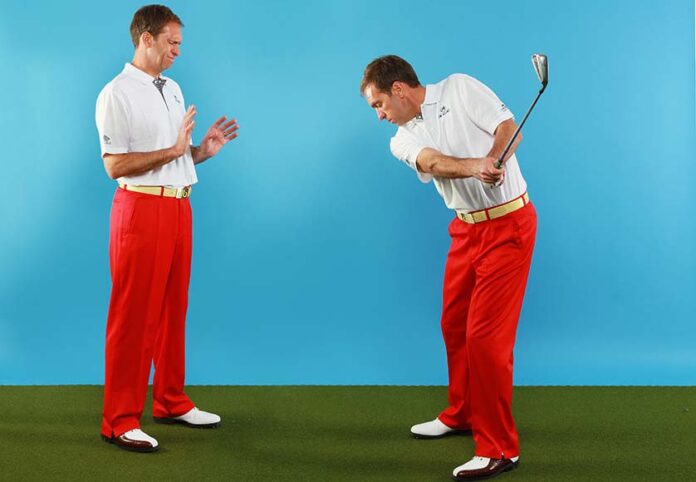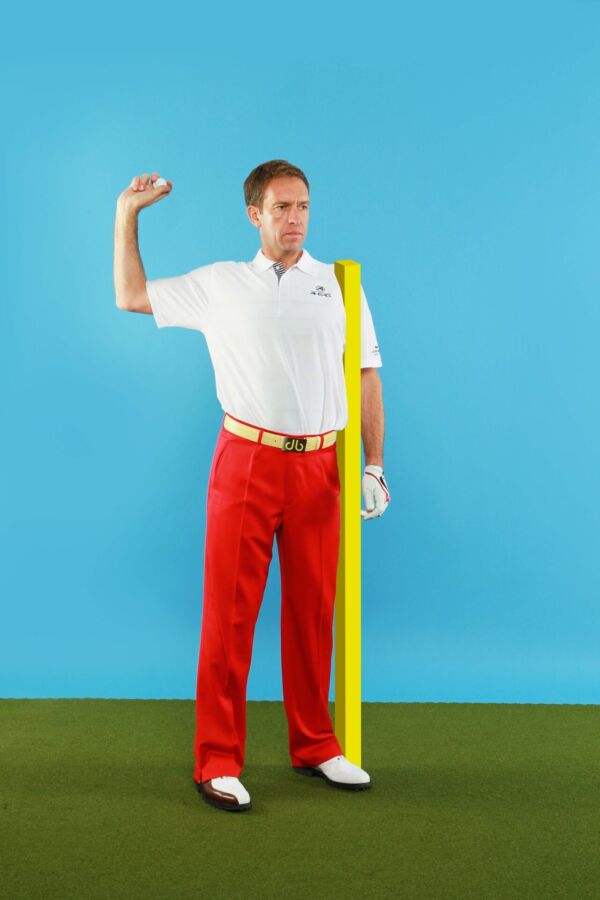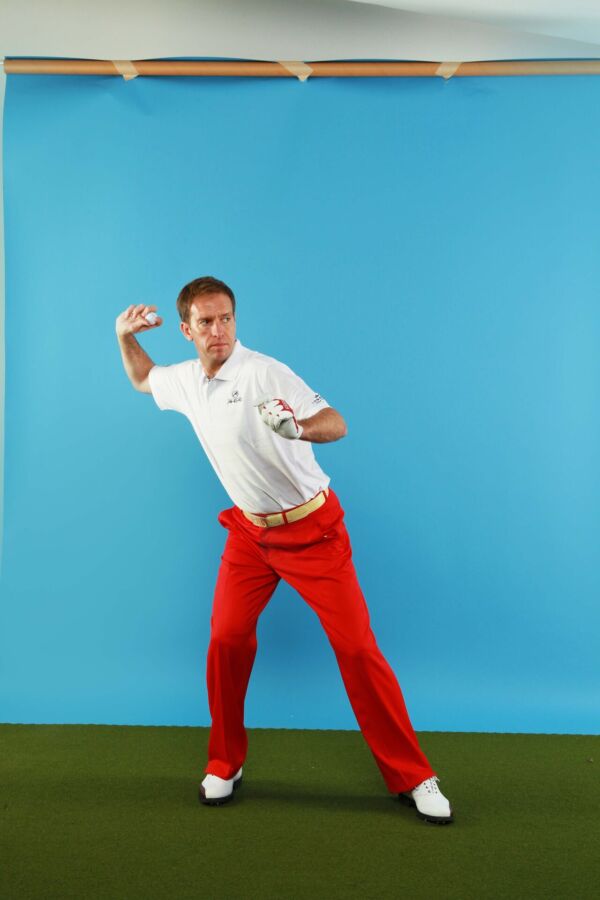Using your natural sequence for easy power
– February 10, 2023

In a natural state of throwing, pulling or hitting, your body works through an equally natural sequence of movement. This is often referred to as the kinematic chain.
This chain is something you began developing as a baby crawling and continued to develop as you went through an evolution of primal movement patterns. In this sequence, movement is natural, coordinated and powerful.
However, if you have been living a fairly sedentary lifestyle for some time, this chain may need some waking up; but the good news is it’s still there! In this article, my aim is to help you know how to feel and move through this natural chain of movement. It will bring your swing increased power and consistency.
“Slow down!” But are you really swinging too fast?
Before we get into the details of the power sequence, let us focus on the players who use it best – tour professionals. There is a good chance the players you see on TV create more clubhead speed and hit the ball harder than you. Yet do they look like they are swinging too fast? Not often. In fact, most of us marvel at how easily they achieve 300+ yard drives. So, what is happening in your swing when it feels rushed, and someone watching you tells you to slow down? (picture 1)
Essentially, your swing is not using the kinematic sequence, which means it is not synchronised. One zone of your body – often shoulders and arms – is overworking and, in effect, shutting down the rest of the body, which ends up feeling like and appearing to be in the way. If one part of your body/swing is stuck and getting in the way with another racing past it, the visual effect and feeling of the swing will be rushed, even though the clubhead speed may not be that fast.
So, slowing down is not necessarily what you are after, even though in the moment it appears to help. Instead, I encourage you to move dynamically, in a way that will give you maximum power but with a swing that looks and feels effortless, just like a tour pro’s. (picture 2)

How to achieve optimum power
The way you are going to do this is through enhanced leg action. Just like improving your balance, developing your leg action often brings improvement in many other aspects of your technique for free. Noticing these changes has been a major reason why my coaching has focused more on movement and less on positions.
Throwing and the kinematic chain
Because the athletic throw is something we would all consider ourselves pretty much able to do, it is a useful way to demonstrate the kinematic chain that naturally exists in all of us. To create any kind of power in a throw, your body will have to create force against and from the ground, and of course it does this through the lower half of the body, triggered by the feet. The best way to learn this is to practise extremes.
Arm/shoulder-only throwing
Imagine how you would look throwing a ball suspended a few feet above the ground. Can you sense your legs would flap around as you try to throw with any force? Of course they would, as they look for the ground to work against. A way of experiencing a limited throw would be to lodge half of your body against a support, leaving only one side of your body free to throw. (picture 3)

Or you can fill some shoes with socks, turn them over and stand on the soles so your surface is unstable; now see how powerful your throw is. You will notice in both cases how weak the motion is.
Dynamic throwing
Now simply get into your normal throwing position and intend to make an athletic throw. As you go through the motion, stay aware of your feet and how they are working; notice how the pressure from the feet to the ground changes as your weight shifts to throw dynamically. (picture 4)
What other sensations do you notice? I am sure very quickly you will notice how the feet interact with the ground in a way that balances you and generates force that then works its way up through the body to allow you finally to release the ball with power.

The swing as an athletic movement
This simple exercise of throwing demonstrates clearly how any movement that requires the body to go through a full range of motion will work at its best when it is in harmony with the innate kinematic chain. The golf swing requires a full range of motion and, therefore, is an athletic movement that can be compared to other sports. So, next time you are watching athletics, particularly throwing sports like the javelin, discus or the hammer, watch the sequence the body goes through and compare it to golf. (picture 5)
Quite often, if I am coaching a new client and they claim to be uncoordinated, I will start the lesson with throwing. This approach allows them to express their natural talent far quicker than trying to hit the golf ball correctly. Also, if there genuinely is a coordination issue, it will be much faster for me to help them develop a coordinated throw rather than a coordinated golf swing. Once they have experienced throwing dynamically, they can take that newfound awareness and use it to develop a more effective golf swing.

Benefits of the kinematic chain
The kinematic chain is a fine example of how, when we stick closely to nature, things not only work more efficiently but also protect us. Here are just some of the benefits of moving this way:
■ As the body winds up, it is correctly supported from below. Imagine the construction of a building: after the foundations are laid, the ground floor goes on, then the first floor, and so on. For the building to be stable, each floor below needs to be in position. This is equally true for the body moving through the golf swing.
■ The sequence gives a natural timing to the swing, thus improving shots.
■ Enhanced rhythm.
■ Moving through the sequence causes the next link to move automatically, meaning no one part of the body overworks.
■ Completing a full swing takes less effort as no one part does that much!
This list is quite a promise! Yet as it is based on a natural movement you already own but are possibly not using, it is very achievable and sustainable.
So, I encourage you to practise your throwing motion, start gently and build up and then allow that natural sequence and movement to come through into your golf swing; if you do, I think you will enjoy the many benefits.
If you have any questions or would like to find out more about my coaching in the Algarve and UK, please visit www.scottcranfield.com or contact me on [email protected]
For more tips to help your golf visit, go to https://www.facebook.com/intuitivegolf
By Scott Cranfield
Scott Cranfield is a PGA Master Coach. For over 30 years, he has dedicated his life to helping golfers achieve their goals through a natural approach that embraces the true laws of how the human mind and body work. Scott’s unique approach has led to the creation of multiple training programmes, and the experience of coaching every standard of golfer from complete beginners through to Ryder Cup players. As well as enjoying a long TV career with Sky Sports and Setanta TV, in 2011 Scott was honoured with the award of PGA Master Professional & Coach.
Read more:
Golf Tips: How to make good golf shots and control de ball
Discover the importance of going back to the basics to improve your golf
The importance of mind & body to the perfect golf swing
Want to know the secret to better golf? It’s all in the feet










